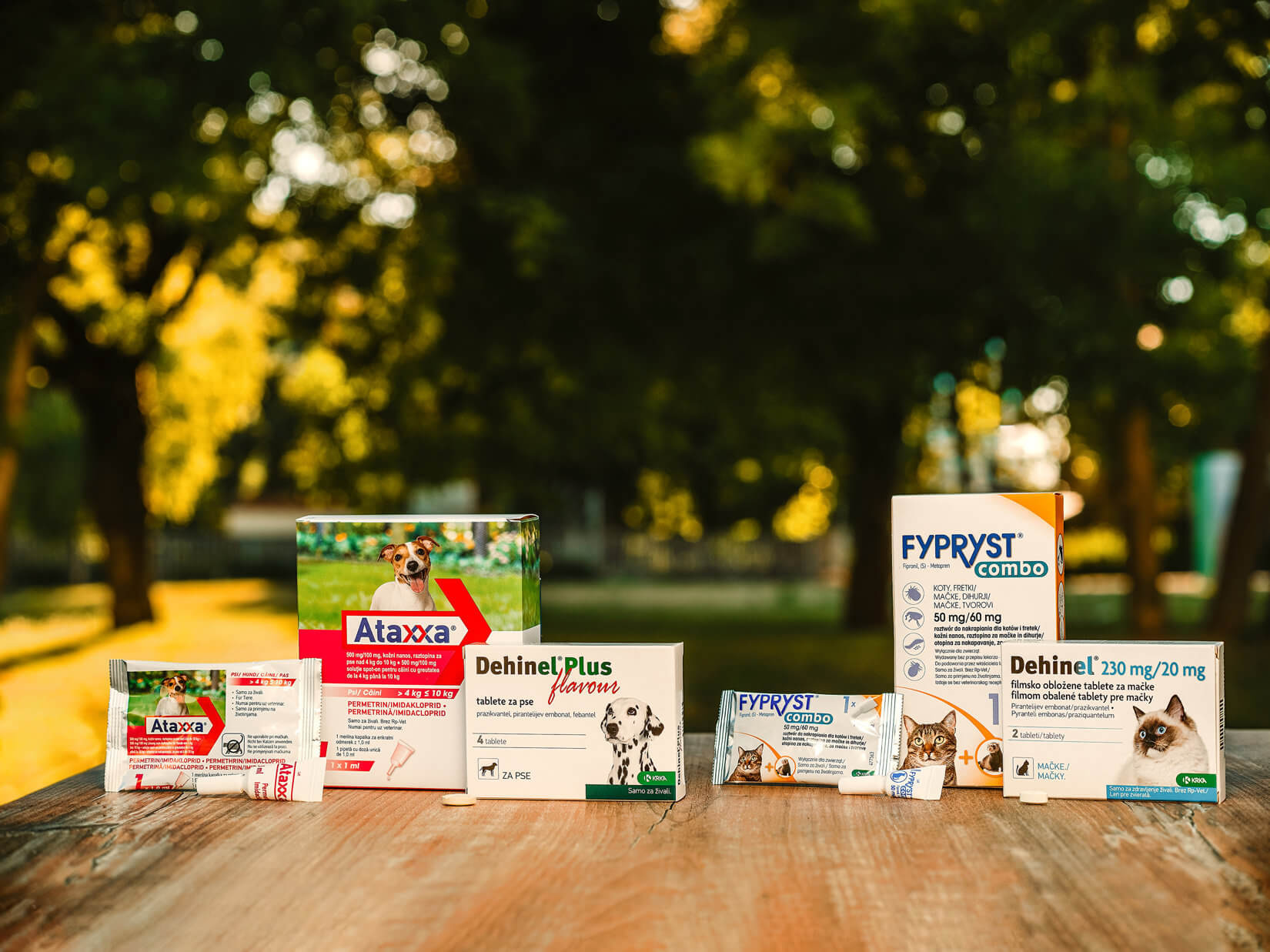Our companion animals are cherished members of our families. We share our living spaces and our time with them, and they help us create beautiful memories. Yet sometimes, they can bring us surprises that are less than pleasant.
Apart from happiness and warmth, cats and dogs bring into our homes unwanted visitors hidden in their fur, digestive systems, and elsewhere. The most common among them are fleas, ticks, and internal parasites. As they can be dangerous to the health of humans and animals, owners of dogs and cats must not forget about regular and complete protection of their companion animals from ears to tail. This way, you can also protect yourself and your other family members.

External parasites carry various pathogens
Fleas, ticks, mosquitoes, mites and lice are some of the most common external parasites. Their bites cause discomfort and itching, and they carry various pathogens.
FLEAS cause more than half of skin reactions in companion animals. Flea infections in companion animals are difficult to control. Only 5% of the flea population is found on your dog or cat. The remaining 95% hide in the surrounding environment in the form of eggs, larvae and pupae. Fleas cause allergic reactions and carry dangerous microorganisms, most commonly tapeworms, which they pass to dogs and cats, and even humans. This is why any treatment of fleas should be accompanied by treatment of internal parasites.
TICKS carry many diseases, for example borreliosis (Lyme disease), anaplasmosis and babesiosis. Prevention is extremely important, as in some cases these diseases cannot be cured, which means that animals can suffer the consequences their whole lives. Ticks become active when average daytime temperatures rise above 5 °C. Infection can also occur in urban areas, as ticks like to live in lawns in front of houses and in parks.
Internal parasites are dangerous to the health of pets and humans
Tapeworms and roundworms are two of the most common internal parasites. Adults and in particular children in close contact with companion animals are especially at risk of infection.
Animals infected with intestinal parasites mostly do not show any clinical signs. Internal parasites can cause many different unpleasant symptoms, especially in puppies and kittens. These may include a bloated belly, diarrhoea, vomiting, anaemia, respiratory disorders, and even blindness.
The most common parasites of dogs and cats that are hazardous to humans are echinococcus, flea tapeworm, and dog and cat roundworm.
Protect your animal companions and your family against parasites
Krka offers a complete range of protection for dogs and cats. Flavoured tablets and spot-on solutions effectively protect your companion animals against internal and external parasites. Since treatment is not successful in certain cases, prevention is the only way to ensure your animal’s health. Prevention is safe and efficient. We have also made sure that our products are easy to use. Fypryst Combo* spot-on solution was awarded the Easy to Give International Cat Care award.

Interesting facts
- Over 2,500 species of fleas have been described worldwide so far. The most common species is the cat flea (Ctenpcephalides felis felis), which is extremely wide-spread and has been identified on all continents except Antarctica.
- One Toxocara spp. female worm may produce up to 20,000 eggs per day. Puppies get infected before they are born, and a gram of faeces can contain over 10,000 eggs.
- Dog tapeworm cysts can grow up to the size of a child’s head over several years.
- Travels to and animal adoptions from southern Europe are an important factor in the increase in leishmaniasis incidence, spread by sand flies. Up to 30% of dogs are infected in endemic parts of Europe. In view of its zoonotic nature, it is recommended to protect your dog with products containing permethrin.
* Krka has registered a wide range of products in different countries. There are differences in registration and availability of our products among the countries.
Some products may also have a different brand name in different countries. Please contact local representative office for up-to-date details specific for your country or visit the available Krka’s local web pages.
